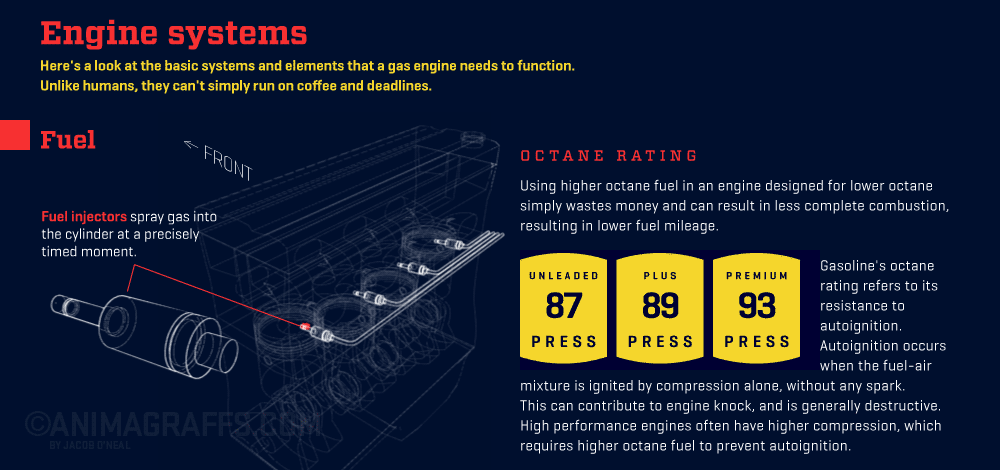
Infographic By Jacob O’Neal/Animagraffs
Many people have questions about the 3 different grades of gas you find at a gas station. As the old adage goes, you get what you pay for. So, it’s logical to think that premium gas is better for your car.
The octane rating of gasoline defines it’s resistance to combustion. A gasoline engine works by spraying a fine mist of gasoline into each cylinder, compressing the air and gas mixture and then igniting it with a spark.
It is possible for the air and gas mixture to ignite under the pressure of compression, even without a spark. This is called auto-ignition. Higher gasoline octane ratings are less susceptible to auto-ignition.
If your vehicle’s engine is designed to use regular (87 octane) gas, you can use mid-grade or premium gas without harming your car. However, the higher octane rating can make it harder for your vehicle to ignite the fuel. So, you may experience lower gas mileage and you will definitely find it costs more to fill up.
If your vehicle’s engine is designed to use premium (93 high octane) gas, you can use mid-grade or regular gas but you may experience knocking from the engine. This is because high performance engines often have higher compression which can cause auto-ignition with lower grade fuels.
So, in this case the old adage, you get what you pay for, isn’t the whole story.
P.S. It is important to know that gas does go bad. It’s called varnishing and is caused by the evaporation of molecules. If you haven’t driven your car for a couple of weeks or have a can of gas sitting in your garage, you shouldn’t use it. If you have to use old gas (it’s already in your car…) then drive straight to the gas station and add new fresh gas. The new gas will mix with the old and save you from costly repairs.
The information in this article is suggestion and does not pertain to all vehicles. Consult the owner’s manual of your vehicle for specific recommendations for your vehicle.
